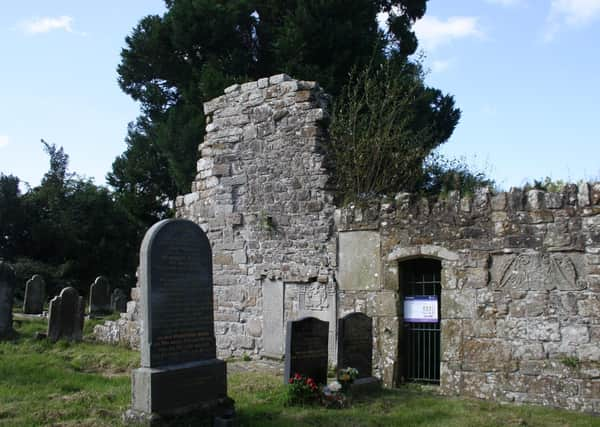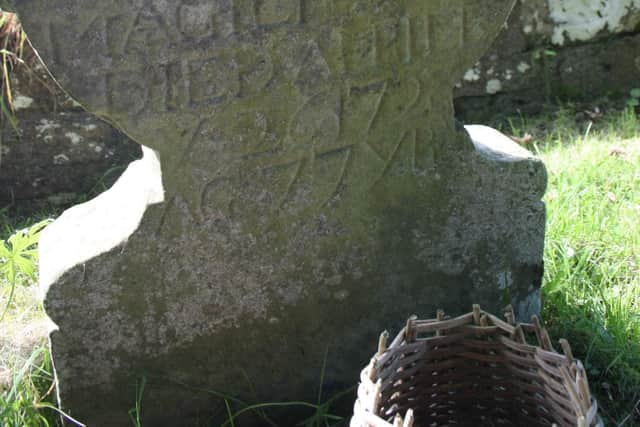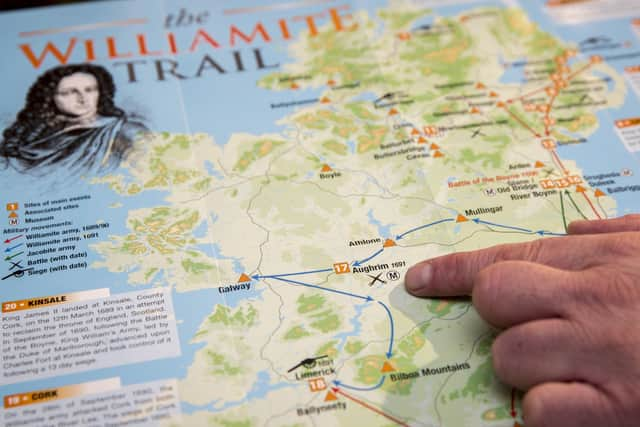STEPPING BACK IN TIME: Getting off the beaten track in Co Fermanagh


My wife and I took it as an opportunity for me to re-engage with my Fermanagh heritage, which I have sadly neglected, and we decided to explore some of the historical sites nearby.
My uncle and aunt recommended that we should drive out to Aghalurcher monastic site on the shores of Lough Erne.
Advertisement
Hide AdAdvertisement
Hide AdI will admit that for Liz and I it was off the beaten track and we had to drive up and down the road several times, even resorting to using Google Maps on our smartphones, before we located the site, but afterwards we were so glad to have found this treasure.


Reputedly founded by St Ronan in the sixth to early seventh centuries, and dedicated to him in the ninth century, the site includes the ruins of a medieval church with a small gated vault, where sculptural fragments are stored (and yes I did have a nosey through the window), and a gateway wasconstructed with stones from the church. The church was remodelled in 1447, with a new roof added. The site seems to have been abandoned after a Maguire killed a kinsman on the altar, effectively de-consecrating the church.
The site includes some interesting gravestones of the late 18th century, plus an early medieval, carved head on the gateway. Additional sculptural fragments from the site are at the Fermanagh County Museum at Enniskillen Castle.
On returning home I found in the News Letter archives interesting details on the burial at Aghalurcher, thanks to the writings of Mona Milligan in October 1939.
Advertisement
Hide AdAdvertisement
Hide AdShe wrote: “In 1731, 42 years after the Siege of Derry, there passed away one of the city’s most active and gallant defenders. He was Major Arthur Noble of Derryree, Lisnaskea, whose family, coming from an old Cornish stock, settled in Fermanagh early in the seventeenth century.


“And while the memory of some of the leading defenders of Derry is perpetuated by the existence of the Apprentice Boys’ Clubs bearing their names, in reading the history of Derry I have often thought that the daring exploits of this intrepid Fermanagh man, who had played such an important part in the successful defence of Derry, that his memory, too, should be preserved in some similar tangible form. So neglected was the grave of this gallant defender of Derry, who later took part in the storming of one of the forts during the Siege of Limerick, that there was difficulty in locating it, and when this was eventually done the caretaker of the churchyard had to clear away the moss which had overgrown the flat tombstone before the inscription could be read.
“The stone itself and the inscription are, however, in a very good state of preservation, and perhaps the overgrowing moss had something to do with this.
“The inscription, which I think it worthwhile to give literally, is as follows - Here lyeth the body of Mag Arthur Noble who departed this life the 29 day of August 1731 aged 77 it is remarkable he was loyal active and corragious in the late revolitisin defending Londonderry in 1689 and in storming the mouth at Limerick wich restored ye Protestant cause under the Glorious K W of Happy Memory.”
Advertisement
Hide AdAdvertisement
Hide AdMilligan reported that Noble’s wasn’t the only grave at Aghalurcher monastic site which can be connected to the Williamite War. She wrote: “In this same churchyard lie the remains of another hero of the Revolution. Close by Major Noble’s grave is a flat stone of which, below the family crest, is the inscription – By John Forster of Rathmoran in Memory of his honoured father James Forster who was killed in His Majesty’s service King William III 1689.”
Since uncovering these details of the graves of Noble and Forster I was curious to find out if any of my own family lay at Aghalurcher church, as it was a burying ground for all sides of the community in Fermanagh. Alas, there are none of my family buried there, either at Holy Cross in Lisnaskea itself or at Maguiresbridge nearby.
But I did pick up an interesting piece of family history that connects to the locality of Newbliss in Co Monaghan, where my great-grandfather John Ruske’s family originally came from.
Is there a historic place in Northern Ireland that you think I should explore? Email: [email protected].
Advertisement
Hide AdAdvertisement
Hide AdMany thanks to Enniskillen Castle: Fermanagh County Museum for sharing a couple of You Tube videos about Aghalurcher.
In the video Frankie Roofe tells us about the history of Aghalurcher Church, click here to watch.
In the second video Barney Devine tells us about the history of Aghalurcher Church, click here to watch.
Comment Guidelines
National World encourages reader discussion on our stories. User feedback, insights and back-and-forth exchanges add a rich layer of context to reporting. Please review our Community Guidelines before commenting.